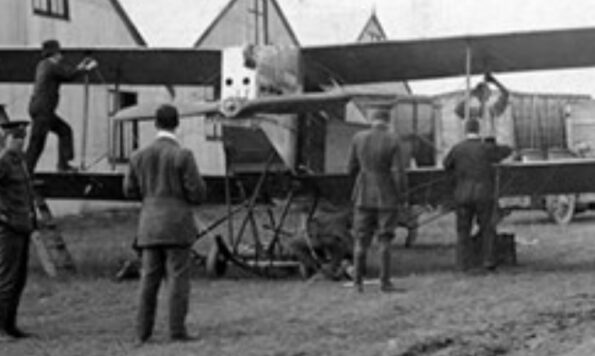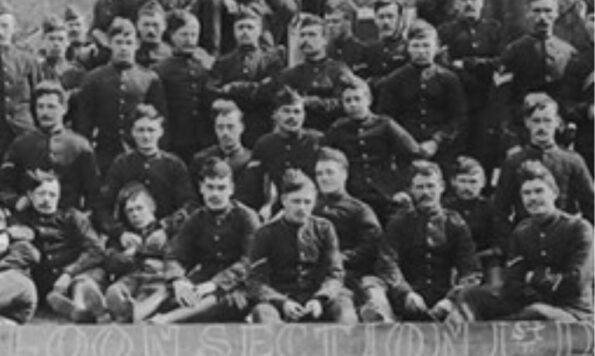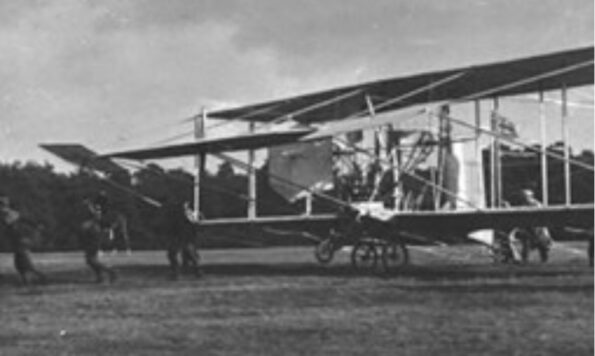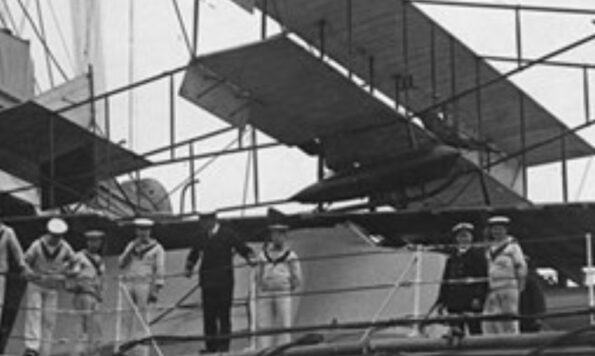- Collections
- The Royal Air Force Museum At Home
- Battle of Britain Groundcrew 7 to 13 September
- Battle of Britain Aircrew 31 Aug to 6 Sep
- Our Lockdown Highlights
- Conservation Week 15 to 21 June
- Spitfire Week 8 to 12 June
- Spitfire Creations Weekend
- D-Day76 1 to 5 June
- Lucky Mascots Weekend
- Dunkirk Week 25 to 29 May
- Competition Weekend Part 2
- Hidden Heroes 18 to 22 May
- Competition Weekend Part 1
- Bomber Week 11 to 15 May
- Create Your Own Museum Weekend
- Countdown to VE Day 75
- Jet Week 27 April to 1 May
- Jet Weekend
- Early Aviators Week 20 – 24 April
- Supporting Research
- Visit our reading room
- Online exhibitions
- Falklands 40
- Never Forgotten: The RAF in the Far East
- Pilots of the Caribbean
- Czechoslovak Squadrons in RAF
- Pre-War Czechoslovakia
- Pre-War Czechoslovakia (Czech)
- Escape to Poland
- Escape to Poland (Czech)
- Departure Abroad – via the USSR and France
- Departure Abroad – via the USSR and France (Czech)
- Leaving for exile – the so-called southern route and the Middle East
- Leaving for exile – the so-called southern route and the Middle East (Czech)
- 68 Night Fighter Squadron
- 68 Night Fighter Squadron (Czech)
- 312 (Czechoslovak) Squadron
- 312 (Czechoslovak) Squadron (Czech)
- 311 (Czechoslovak) Squadron
- 311 (Czechoslovak) Squadron (Czech)
- Czechoslovak Women in the Women’s Auxiliary Air Force (WAAF)
- Czechoslovak Women in the Women’s Auxiliary Air Force (WAAF) (Czech)
- Lidice tragedy
- Lidice tragedy (Czech)
- Osudy- Life stories
- Osudy- Life stories (Czech)
- Osudy- Life stories 2
- Osudy- Life stories 2 (Czech)
- Osudy – Life stories 3
- Osudy- Life stories 3 (Czech)
- Return to a Liberated Country
- Return to a Liberated Country (Czech)
- Victims of the communist regime
- Victims of the communist regime (Czech)
- Rehabilitation and Commemoration of Former RAF Airmen
- Rehabilitation and Commemoration of Former RAF Airmen( Czech)
- Living History Group
- Living History Group (Czech)
- Air Transport Auxiliary
- Civil flyers
- On the verge of war
- Sir Gerard d’Erlanger
- A lack of work
- Birth of the ATA
- Stewart Keith-Jopp
- First female pilot
- Pauline Gower
- The first eight women
- ATA expansion
- Legion of the air
- Annette Mahon
- The Battle of France
- The Battle of Britain
- Women fly fighter aircraft
- Anything to anywhere
- The taxi service
- John Gulson
- Alison King
- The support network
- Women fly bombers
- Joan Hughes
- Return to France
- Communication
- The reach of the ATA
- The death of a service
- A final act of progress
- ATA closure
- Sir Alan Cobham ; A Life of a Pioneering Aviator
- An Enduring Relationship : A History of Friendship between the Royal Air Force and the Royal Air Force of Oman
- 617 Squadron and the Dams Raid
- Introduction
- Model Dams Projects
- Barnes Wallis’ Papers
- Wing Commander Winterbotham’s Letter
- Group Captain Conrad Verity’s Memoirs
- Lancaster Modifications
- Bouncing Bomb Diagram
- Bouncing Bomb Tests
- Barnes Wallis’ Pass
- Designing the UPKEEP Mine
- Guy Gibson’s Log Book
- Spotlights – Low Altitude Flying Modification
- Target Map and Photo of the Eder Dam
- Target Photos of the Ruhr Dams
- Flight Lieutenant H.B. ‘Mick’ Martin’s Log Book
- Sergeant Charles Brennan’s Papers
- Aircraftwoman Morfydd Gronland’s Memoir
- Reconnaissance Photos of the Damaged Dams
- Letter from Air Commodore S.O. Bufton
- Herr Clemens Mols’ Memoir
- Casualties of the Dams Raid
- Media Reports
- Messages of Congratulation
- Signed Menu from A.V. Roe Celebratory Dinner
- Dambusters Podcasts
- Conclusion
- Royal Flying Corps Centenary
- The Polish Air Force in WWII
- Taking Flight
- History of the Battle of Britain
- From world power to colonial policeman
- Churchill’s Warnings
- Expansion at last
- The Rise of the Nazi Party
- The Rise of the Luftwaffe
- Young Nazis
- Munich
- Poland – The Catalyst
- Phoney Air War in France
- The Battle of France
- The Home Front
- Air Raid Shelter Protection
- Evacuees
- Operation Sealion
- British Defences
- Bomber Command
- Other Commands
- The New Tactics
- RADAR – The Battle Winner?
- How RADAR Works
- Introduction to the Phases of the Battle of Britain
- The Battle of Britain Phase One
- The Battle of Britain Phase Two
- The Battle of Britain Phase Three
- The Battle of Britain Phase Four
- The Battle of Britain Phase Five
- The Hardest Day
- The Blitz
- The Blitz – The Hardest Night
- Subordinate German Commanders
- Commander in Chief of the Luftwaffe
- Corpo Aero Italiano
- The Few
- Battle of the Nations
- Women of Britain
- Subordinate RAF Commanders
- Commander-in-Chief of Fighter Command
- Douglas Bader: Fighter, Pilot
- Women of the Air Force
- Timeline
- Commandant Dame Helen Gwynne-Vaughan
- Women’s Royal Air Force (WRAF) 1918 – 1920
- Air Chief Commandant Dame Katherine Trefusis-Forbes
- Women’s Auxiliary Air Force (WAAF) 1939 – 1949
- All the same buttons
- Women’s Royal Air Force (WRAF) 1949 – 1994
- WRAF and WAAF Recruitment Posters
- Air Commandant Dame Felicity Peake
- Women in the RAF Today
- Listen to Podcasts
- Your Comments and Stories
- Lest We Forget
- Remembrance Day
- The First World War (1914 – 1918)
- The Commonwealth War Graves Commission
- The Cenotaph
- War Memorials
- The Royal British Legion
- The Second World War (1939 – 1945)
- The Royal Air Force Missing Research and Enquiry Service 1944 – 1952
- St. Clement Danes – The Central Church of the Royal Air Force
- The Royal Air Force Today
- Support Organisations
- Remembrance Podcasts
- Americans in the Royal Air Force
- Archive exhibitions
- Alex Henshaw: Flying Legend, A Life in Art
- Freedom & Liberty
- Wonderful Amy!
- De Havilland – The Man and the Company
- Kings, Queens & Flying Machines
- Photographs of ‘Kings, Queens & Flying Machines’
- The Hendon Pageants
- Prince Albert
- No flying solo for Prince Albert
- de Havilland Moth
- The Royal Flight Vickers Viastra
- Three Kings
- The Royal Family visiting Mildenhall
- The King’s Flight
- King George V prepares for a review
- King George VI visiting Battle squadrons
- The formation of the Women’s Auxiliary Air Force
- HM Queen Elizabeth with Princess Elizabeth
- King George VI and Queen Elizabeth visited Bentley Priory
- The Armed King’s flight
- Duke of Gloucester visiting No. 467 Squadron
- HM King George VI with family
- The first post-war King’s flight
- The Vickers Viking
- Prince Phillip’s training
- The de Havilland Heron
- HM Queen Elizabeth II’s first Royal Review
- Westland Whirlwind HCC12
- Hawker Siddeley Andover
- BAe146s
- Long haul flights
- RAF Comet
- Prince Charles in Chipmunk
- The Queen’s Colour Squadron
- Worth a Thousand Words – Air Diagrams
- Me 210
- Ju 87D
- Ju 88
- Layout of kit and method of wearing equipment
- Aids to homing
- Layout of WAAF kit
- Fog dispersal
- Emergency landing service
- Ju 188
- He 177
- Decoyed
- Strafed!
- Beware of the Hun in the sun
- Pilot’s controls – Stirling I
- Emergency Equipment & Exits – Lancaster I
- …And all this – because of you
- 5 men in a dinghy
- I thought YOU had the dinghy pack!
- Watch that prop…what prop?
- Dammit, chaps – who remembered to bring this thing anyway?
- Seconds Count
- Keep your aircraft to the tarmac
- Prevention of tyre and brake accident
- Danger – watch for tyre creep
- Lancaster I II III standard & Y types dinghy drill
- Jungle survival: Edible tropical plants
- DP/R and D.P.L. functioning (single arming)
- Keep your transparent panels clean (turrets)
- Train how to fit into the post war picture
- BABS Mk1C Still Air
- Not Quite Extinct!
- Battle of Britain Class Locomotive Plates
- Comet – The World’s First Jet Airliner
- The Art of Sergeant Elva Blacker
- Home
- Collections
- Online exhibitions
- Royal Flying Corps Centenary
The Royal Flying Corps Centenary
Avro biplane
being readied for flight for the Military Aeroplane Competition, Larkhill, 1912
Balloon Section
of the Royal Engineers, circa 1892
Samuel Cody's
British Army Aeroplane No. 1
Short Biplane
aboard HMS Hiberia for the Royal Review, Weymouth, May 1912
The Royal Flying Corps Centenary
The Royal Flying Corps (RFC) was created by Royal Warrant 100 years ago on 13 April 1912 and established a month later in May.
The RFC can trace its origins back to the Royal Engineers and the early flying experiments undertaken by the Army from the 1870s, and by the Royal Navy from the 1900s.
Find out more about British military aviation 1862-1912
This pioneering work demonstrated the potential for using balloons, kites, airships and finally aeroplanes for a military purpose. This realisation, combined with the arguments put forward by civilian ‘air-minded’ individuals of the time and the evidently superior air forces of other European countries, persuaded the British Government that a flying corps was needed. As a result the RFC was established in 1912.
It consisted of a Military Wing, a Naval Wing and a Central Flying School. This small Corps, formed just nine years after the famous Wright Brothers’ flight of 1903 would find itself at war just two years later. The First World War would see the first extensive and decisive use of air power.
To mark the centenary of the RFC this exhibition uses material held within the Museum’s collection to highlight the experiences of those involved with early Army and Navy flying. It also tells the story of how the RFC came to be formed and its first few years of existence.



